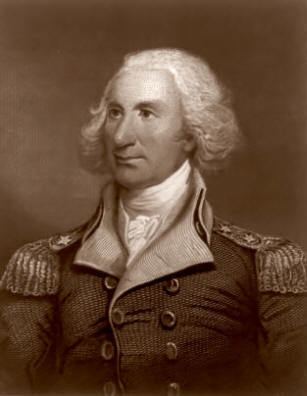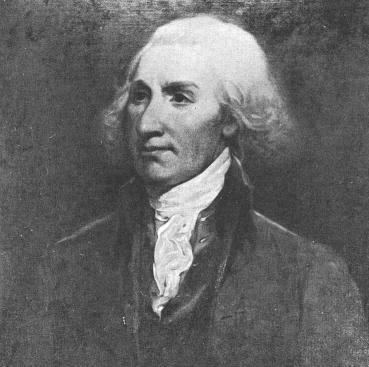Preceded by (none) Profession Soldier, Statesman | Name Philip Schuyler Religion Dutch Reformed | |
 | ||
Full Name Philip John Schuyler Born November 20, 1733Albany, New York ( 1733-11-20 ) Spouse Catherine Van Rensselaer (m. 1755) Children Elizabeth Schuyler Hamilton, Angelica Schuyler Church, Philip Jeremiah Schuyler Similar People Angelica Schuyler Church, Elizabeth Schuyler Hamilton, Horatio Gates, John Burgoyne, Arthur St Clair | ||
Philip John Schuyler (; November 20 [O.S. November 10] 1733 – November 18, 1804) was a general in the American Revolution and a United States Senator from New York. He is usually known as Philip Schuyler, while his son is usually known as Philip J. Schuyler.
Contents
- Early life
- Family
- Early career
- Revolutionary War
- Battle of Saratoga
- Later career
- Personal life
- Legacy
- References

Born in Albany, New York into the prosperous Schuyler family, Schuyler fought in the French and Indian War. He won election to the New York State Assembly in 1768 and to the Continental Congress in 1775. He planned the Continental Army's 1775 Invasion of Quebec, but poor health forced him to delegate command of the disastrous invasion to Richard Montgomery. He prepared the Continental Army's defense of the 1777 Saratoga campaign, but was replaced by General Horatio Gates as the commander of Continental forces in the theater. Schuyler resigned from the Continental Army in 1779.

Schuyler served in the New York State Senate for most of the 1780s and supported the ratification of the United States Constitution. He represented New York in the 1st United States Congress but lost his state's 1791 Senate election to Aaron Burr. After a period in the state senate, he won election to the United States Senate again in 1797, affiliating with the Federalist Party. He resigned due to poor health the following year. He was the father of Elizabeth Schuyler Hamilton and the father-in-law of Secretary of the Treasury Alexander Hamilton.
Early life
Philip John Schuyler was born on November 20 [O.S. November 10] 1733 in Albany, New York, to Cornelia Van Cortlandt (1698–1762) and Johannes ("John") Schuyler Jr. (1697–1741), the third generation of the Dutch family in America.
Prior to his father's death on the eve of his eighth birthday, Schuyler attended the public school at Albany. Afterward, he was educated by tutors at the Van Cortlandt family estate at New Rochelle. In 1748 he began to study with Reverend Peter Strouppe at the New Rochelle French Protestant Church, where he learned French and mathematics. While he was at New Rochelle he also joined numerous trade expeditions where he met Iroquois leaders and learned to speak Mohawk. He joined the British forces in 1755 during the French and Indian War, raised a company, and was commissioned as its Captain by his cousin, Lt. Governor James Delancey. Later in that war, he served as a quartermaster, purchasing supplies and organizing equipment.
Family
Philip was related to many illustrious contemporaries, including: Peter Schuyler, a cousin who commanded the Jersey Blues; Hester Schuyler, a cousin who married William Colfax, a veteran of George Washington's Life Guards and later a general in the New Jersey militia who also commanded the Jersey Blues (William and Hester were the grandparents of Vice President and Speaker of the House Schuyler Colfax); Arent Schuyler DePeyster (cousin), a noted Loyalist; Mary (Watts) Johnson, a second cousin who was a Loyalist and wife of Colonel Sir John Johnson; and Dr. John Cochran, a brother-in-law who was the Director General of the Military Hospitals of the Continental Army. His daughter Elizabeth married Alexander Hamilton who was the first Secretary of the Treasury to the United States under George Washington.
Early career
From 1761 to 1762, Schuyler made a trip to England to settle accounts from his work as quartermaster. He began construction on his home in Albany, later called Schuyler Mansion, during this time. He also began construction of his country estate (now known as the General Schuyler House), at Saratoga.
In 1768, Schuyler began his political career as a member of the New York Assembly, serving in that body until 1775. During that time, his views came to be more opposed to the colonial government, particularly in matters of trade and currency. He was made a colonel in the militia for his support of Governor Henry Moore.
Revolutionary War
Schuyler was elected to the Continental Congress in 1775, and served until he was appointed a Major General of the Continental Army in June. General Schuyler took command of the Northern Department, and planned the Invasion of Canada (1775). His poor health required him to place Richard Montgomery in command of the invasion.
As department commanding General, he was active in preparing a defense against the Saratoga Campaign, part of the "Three Pronged Attack" strategy of the British to cut the American Colonies in two by invading and occupying New York State in 1777. In the summer of that year General John Burgoyne marched his British army south from Quebec over the valleys of Lakes Champlain and George. On the way he invested the small Colonial garrison occupying Fort Ticonderoga at the nexus of the two lakes. When General St. Clair abandoned Fort Ticonderoga in July, the Congress replaced Schuyler with General Horatio Gates, who had accused Schuyler of dereliction of duty.
Battle of Saratoga
The British offensive was eventually stopped by Continental Army then under the command of Gates and Benedict Arnold in the Battle of Saratoga. That victory, the first wholesale defeat of a large British force, marked a turning point in the revolution, for it convinced France to enter the war on the American side. When Schuyler demanded a court martial to answer Gates' charges, he was vindicated but resigned from the Army on April 19, 1779. He then served in two more sessions of the Continental Congress in 1779 and 1780.
Schuyler was an original member of the New York Society of the Cincinnati.
Later career
After the war, he expanded his Saratoga estate to tens of thousands of acres, adding slaves, tenant farmers, a store, mills for flour, flax, and lumber. His flax mill for the making of linen was the first one in America. He built several schooners on the Hudson River, and named the first Saratoga.
He was a member of the New York State Senate from 1780 to 1784, and at the same time New York State Surveyor General from 1781 to 1784. Afterwards he returned to the State Senate from 1786 to 1790, where he actively supported the adoption of the United States Constitution.
In 1789, he was elected a U.S. Senator from New York to the First United States Congress, serving from July 27, 1789, to March 3, 1791. After losing his bid for re-election in 1791 to Aaron Burr, he returned to the State Senate from 1792 to 1797. In 1797, he was elected again to the U.S. Senate and served in the 5th United States Congress from March 4, 1797 until his resignation because of ill health on January 3, 1798.
Personal life
In September 1755, he married Catherine Van Rensselaer (1734–1803) at Albany. She was the daughter of Johannes van Rensselaer (1707/08–1783) and his first wife, Engeltje Livingston (1698–1746/47). Johannes was the grandson of Hendrick van Rensselaer (1667–1740). Philip and Catherine had 15 children together, eight of whom survived to adulthood, including:
Schuyler's country home had been destroyed by General John Burgoyne's forces in September, 1777. Later that year, he began rebuilding on the same site, now located in southern Schuylerville, New York. This later home is maintained by the National Park Service as part of the Saratoga National Historical Park, and is open to the public.
Schuyler died at the Schuyler Mansion in Albany on November 18, 1804. He is buried at Albany Rural Cemetery in Menands, New York.
Legacy
To honor his legacy, many cities, structures, and statues have been named in his honor:
